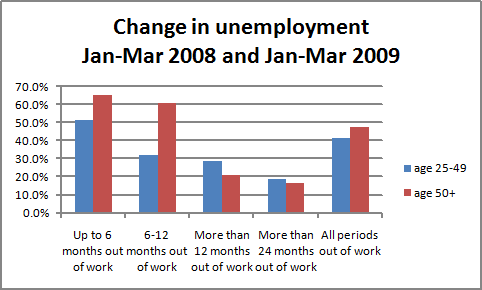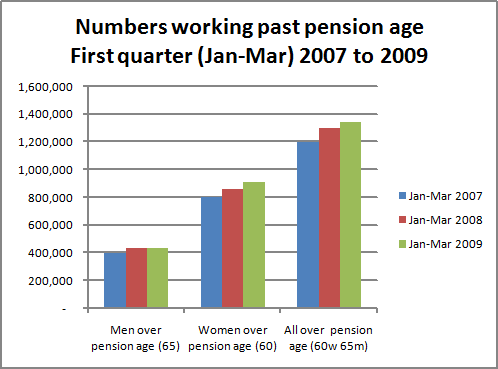Unemployment over 50
People over 50 who have lost their job in the last year are finding it much
harder than younger people to return to work. The latest unemployment figures
show that among people who have been looking for work for six to twelve months
the rate of unemployment has risen nearly twice as fast among the over fifties
as those aged 25-49. For the older group it is up by 61% compared with a rise of
32% for the younger group. The rate of unemployment for those out of work for up
to six months also grew much faster among the older workers – up 65% on a year
ago compared with 51% up for those aged 25-49. Only at the longer periods out of
work did the unemployment rate change less for older workers. Overall
unemployment among the over 50s was nearly 50% higher in the first quarter of
this year compared with the same period in 2008 whereas among people aged 25 to
49 the increase was just over 40%. The figures fly in the face of new laws on
age discrimination which apply to recruitment as well as to conditions at work.
Age Concern and Help the Aged has called on the Government to step in with
special programmes to help people over 50 get back to work.

While those over 50 struggle to get another job, the figures also show that the number of people working after pension age is still growing – up from less than 1.2 million two years ago to almost 1.35 million this year. The trend is seen particularly among women. The number working after they reach 60 has risen by more than 100,000 in two years to reach 912,000 in the first quarter of 2009. For the first time more than one in eight women who can draw their state pension is still at work. That compares with about one in ten of men with only 436,000 working past pension age. That number is slightly down on a year ago though still 40,000 up on the same period in 2007. One reason for the difference in numbers is that women reach state pension age at 60, while men must wait until 65. Women’s pension age begins to rise from next April and will reach 65 from April 2020.


